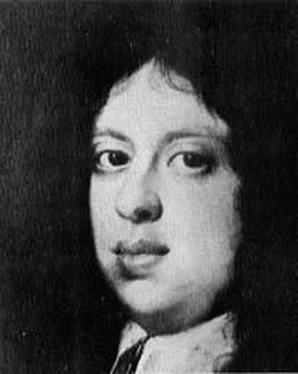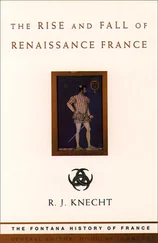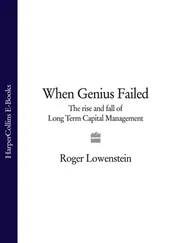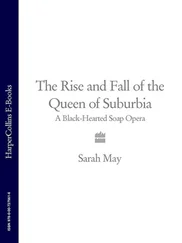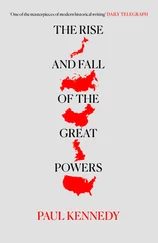Julius II, who after the twenty-six-day Papacy of Alexander VI‘s successor, the decrepit Pius III, had been elected Pope in November 1503, was the grandson of a fisherman, a tall, handsome, rough, talkative, syphilitic, irascible man. He was much given to boasting of his poor childhood – when he had sailed with cargoes of onions down the Ligurian coast – of his lack of scholarship and of his taste for the life of a soldier. ‘I am no schoolman,’ he said once when asked to suggest a suitable emblem for a statue of him being made by Michelangelo. ‘Put a sword in my hand, not a book.’
Julius delighted in the sword. Not long after his elevation he set off, with twenty-four cardinals in unwilling attendance, to reduce the rebel cities of Perugia and Bologna whose obedience to the Church he was determined to compel. Shaken by the news of his approach, Gian-Paolo Baglioni, the ruler of Perugia, surrendered the city into his hands, kneeling before him and begging for mercy. The Pope forgave him but added, ‘Do it again and I’ll hang you.’ Then, leaving his cardinals no time for rest, he marched them through the marshes of the Romagna to Bologna. The city having been deserted by Giovanni Bentivoglio, they entered it on 11 November 1506, exhausted and peevish, their hands and faces red and lumpy with mosquito bites.
Having regained Bologna and Perugia for the Church, Julius now determined also to recover Rimini, Faenza and Ravenna, which had fallen into the hands of Venice. To do so he called into existence the League of Cambrai, allying himself not only with Louis of France and Ferdinand of Spain but also with the Emperor Maximilian who were all to take a share of the Venetian dominions. The combination was far too powerful for Venice whose troops were routed at Agnadello near Cremona on 14 May 1509. Yet the Pope, having so successfully extended the dominions of the Church, could not but regret that this had entailed foreign powers gaining footholds in Lombardy. He determined to drive diem out, repeatedly declaring, ‘I will not have these barbarians taking over Italy.’ He called upon all Italy to drive them back once more across the Alps, beginning with the French. ‘Let’s see,’ he said riding off to turn a French garrison out of Mirandola, ‘Let’s see who has the bigger balls, the King of France or I.’ Inspired by his relentless determination his troops captured Mirandola, through whose shattered walls he scrambled by means of a wooden scaling ladder. But it was to be many months before he was able to achieve a more significant success, for most Italian states, including Florence, showed little inclination to respond to his call.
France was the Florentines’ traditional friend. The friendship had, admittedly, been placed under severe strain by Charles VIII, but the war with Pisa which the French had provoked was now over. The Pisans had been forced to sue for peace after the defeat of their supporters, the Venetians, at Agnadello. The Florentines, therefore, decided to remain neutral – ‘a bad example’, the Pope declared angrily; but it was one which other Italian states thought it prudent to follow. So Julius, unable to rouse Italians by his call for a crusade against the French, turned to the Spaniards, now in firm possession of Naples. With them he formed a new Holy League whose forces marched north to Bologna which, having been retaken with French help by Alfonso d’Este, Duke of Ferrara, had been returned to Bentivoglio. At the same time, Julius announced that once Bologna had been recaptured his Legate there would be Cardinal Giovanni de’ Medici. Julius had been much impressed by Giovanni’s good-natured acceptance of the discomforts of campaigning and had already rewarded him with the see of Amalfi and the promise of further preferment. In Florence, the Signoria heard of Giovanni’s ascendance with alarm.
The forces of the Holy League, however, were far from successful. They had failed to take Bologna; and, on Easter Saturday 1512, they were stopped in their tracks on the banks of the Ronco on their way to the relief of Ravenna. In the ensuing savage battle – in which the Spanish and French cannon, roaring ceaselessly in the smoke, sent their balls bouncing and ploughing through whole rows and columns of men-at-arms – the losses on both sides were so enormous that scarcely ever before in the history of Europe had so many men been left dead upon the field. Almost ten thousand soldiers of the Holy League are said to have been killed, and nearly as many men in the French army.
Cardinal Giovanni, who had ridden along the Spanish ranks on a white palfrey before the battle began, exhorting the troops to fight well and praying to God for victory, had been captured as he gave comfort to the dying amidst the littered corpses of the dead. He was escorted to Bologna where his stout figure in scarlet robes and his sweating face beneath the broad-brimmed tasselled hat were exposed to the taunts of the populace. The Bentivoglio, however, treated him with kindness. He was also treated well upon his removal to Modena where Bianca Rangone sold her jewels to provide him with food and clothing. At his eventual destination, Milan, he was provided with comfortable lodgings in the house of Cardinal Federigo Sanseverino.
The French, so Giovanni then believed, had gained an undoubted victory outside Ravenna from which they had forced the cruelly mauled forces of the Holy League to withdraw. The Florentines thought so, too, and lit huge bonfires to celebrate the Pope’s defeat as they had done to celebrate the rout of the Venetians at Agnadello. But it proved to be an immensely costly victory from which the winning side could reap no advantage. In the closing stages of the battle, the talented young French commander, Gaston de Foix, had been knocked from his horse by a stray shot and, spattered with blood and brains, had been hacked to death by Spanish infantrymen. Moreover, a large Swiss army had marched down towards French-occupied Lombardy to take advantage of the confusion, while France itself was threatened with invasion by both England and Spain. The French forces, running short of provisions, were obliged to withdraw from Ravenna and Bologna, then from Milan, and finally from Lombardy altogether.
Cardinal Giovanni, far too valuable a hostage to leave behind, was compelled to go with them. But determined to decamp long before he reached the Alps, he feigned illness at a village on the banks of the Po, where a priest who was accompanying him managed to slip away from the French guard and to enlist the help of two local landowners in a plan of escape. As the cardinal was about to step into a barge at the river bank the following morning, a band of armed peasants from the landowners’ estates burst out of the reeds and, in the ensuing uproar, hustled the captive away. Improbably disguised as a soldier, Giovanni was then taken to a pigeon-house in the courtyard of a castle belonging to one of the landowners’ kinsmen, then to Godiasco, then to Mantua where he learned that preparations were already far advanced to use the army of the Holy League, now free of the French, to enforce a change of government in Florence. His arrival in Mantua ensured that there could be no doubt what form that new government would take.
Since the execution of Savonarola, Florence, no longer an important power, had failed to regain the vitality and gaiety of the golden age it had enjoyed during the last years of Lorenzo the Magnificent. A series of financial crises had brought several guilds almost to the verge of ruin. The long, exhausting, humiliating war against Pisa, incompetently conducted by treacherous condottieri , had drained the Signoria ’s resources. The French King’s representative in Tuscany, Robert de Balzac Entragues, had sold Sarzana to Genoa and Pietra-santa to Lucca. Gloom descended over the city, a gloom which was reflected in the final paintings of Botticelli, a prematurely old man now, limping through the streets, ‘unable to stand upright and moving about with the help of crutches’. 2
Читать дальше
